The Ultimate Source For FREE Botanical (and Bird, and Butterfly, and Many More) Illustration Collections
Y’all, I have an amazing source to share with you today!! I just happened upon it somehow, and I feel like I hit the mother lode. So I wanted to pass it along to you in case you don’t know about it.
First, let me back up a bit. Let’s talk about botanical prints and other collections of prints (birds, butterflies, dragonflies, etc.). I absolutely love botanical prints and other types of prints that look like they’re all from the same old book of illustrations, and I really like grids of six or more prints a hung together on a wall. I mean, I’ve seen collections of twelve, or twenty, or even more, and I think it looks amazing.
Anyway, a while back I bought six white frames from Target (these are the ones I bought), with the idea of doing a gallery wall of something colorful to use either in my hallway or in the music room. So I set out to find a series of colorful prints that I could put into my frames. Botanicals? Birds? Something else?
Here’s what I found. It’s pretty easy to find a set of two or three coordinating prints for purchase, but anything above three seems to get challenging. You can often find sets with more than three at places like Ballard Designs, but the selection is terrible (they’ll have exactly six coordinating prints, so if you don’t like three of them, you’re out of luck), and the prices are outrageous ($199 per framed picture for the smallest size available, with no option to purchase just the prints without frames).
But then I came across the most amazing resource ever! It’s a Flickr account (I had totally forgotten that Flickr even exists!) called Biodiversity Heritage Library. Y’all!! If you love collections of illustrations of all types of flora and fauna from books from the 1800s, you will absolutely get lost in this Flickr account.
I started out just looking through their photostream, which you can see here. But with over 1200 pages of pictures (over 122,000 pictures!!!), it would have taken forever to get through those, and about half of them didn’t interest me anyway. Then I realized that you can look at them grouped into albums labeled with the name of the book that the illustrations came out of. You can see those albums here. That’s really helpful because you know that all of the illustrations in the album will coordinate with each other.
Some of the folders only have two or three pictures. Others have less than twenty. But the vast majority, from what I saw, had anywhere from 20 to 100 pictures in each album, so you can easily weed out the ones you don’t like, and still have plenty to choose from.
And let me tell you, they have just about everything you could imagine — flowers, birds, butterflies, dragonflies, snakes, beetles, bees, lizards, bird nests and eggs, all kinds of sea animals, algae, shells, turtles, pollen (sounds strange, but they’re actually pretty!), cacti, mushrooms, seaweed, fish, and more. Sooooo much more!!
Here are some samples of my favorite albums with the links to the specific albums under each row of photos. And like I said, these are just a sampling of what’s in each of these albums. Most of them contain 20+ photos, and some contain 100 or more. I’ll start with my absolute favorite album — colorful birds!
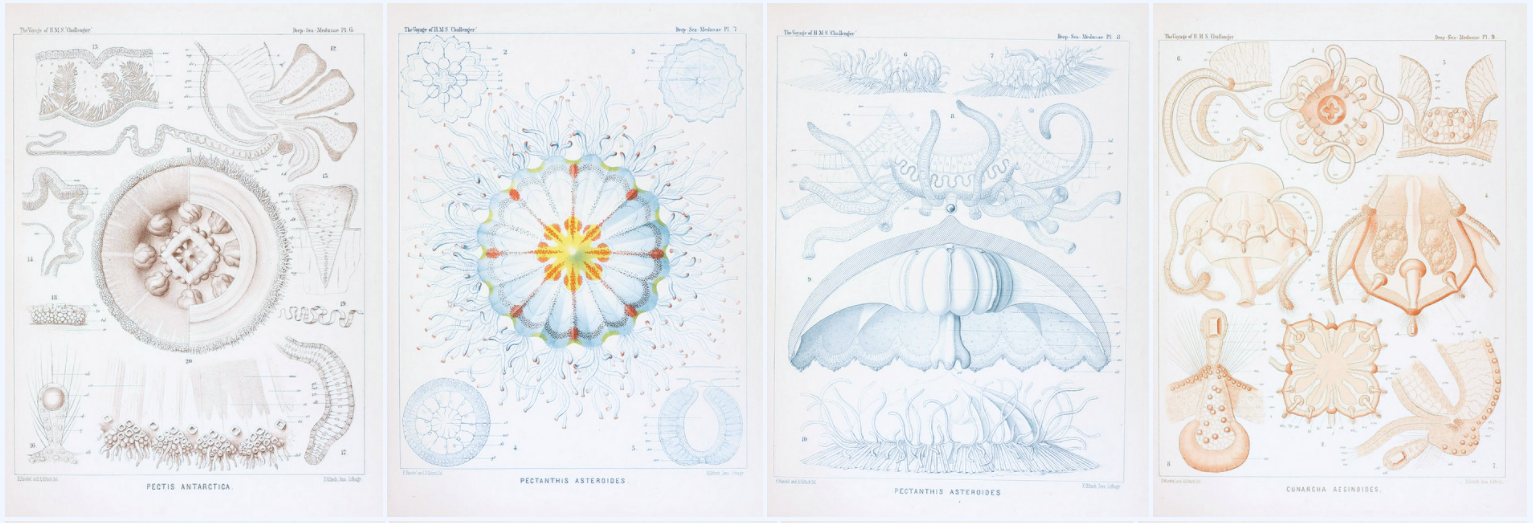
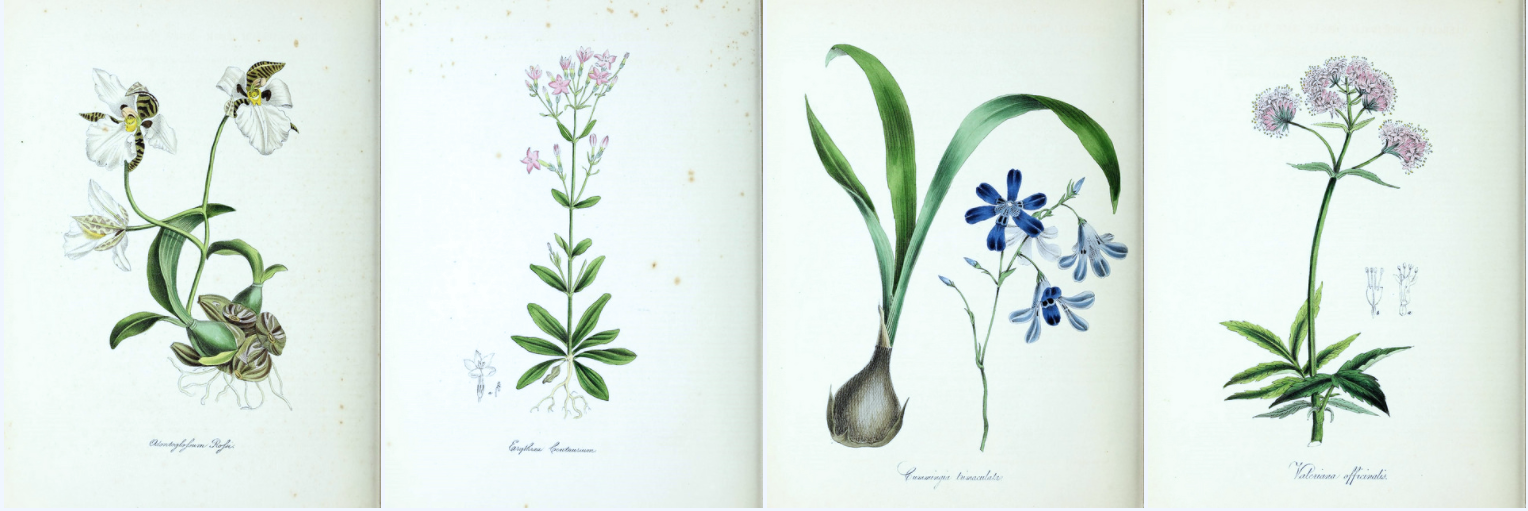


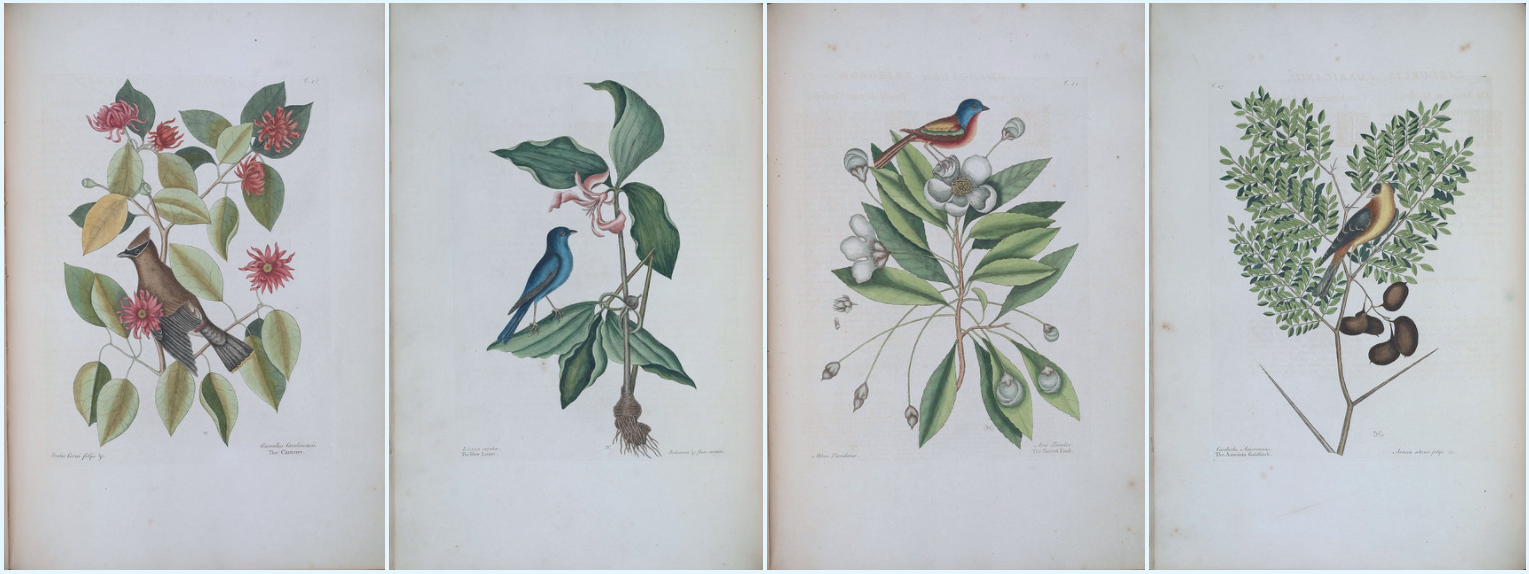



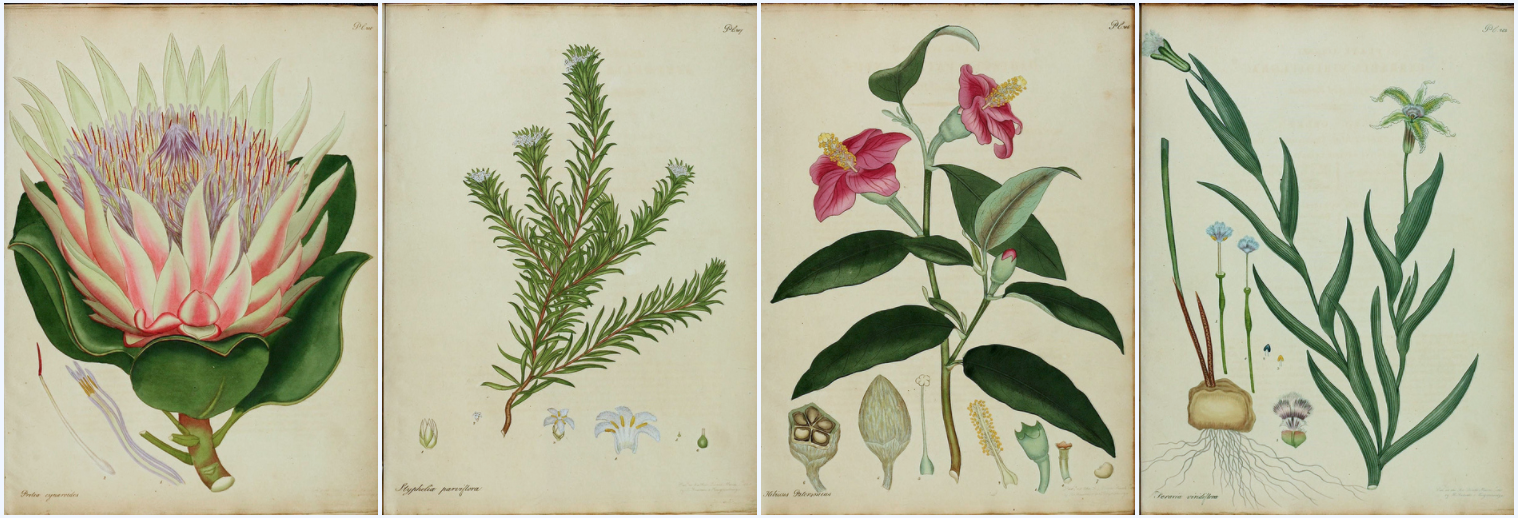
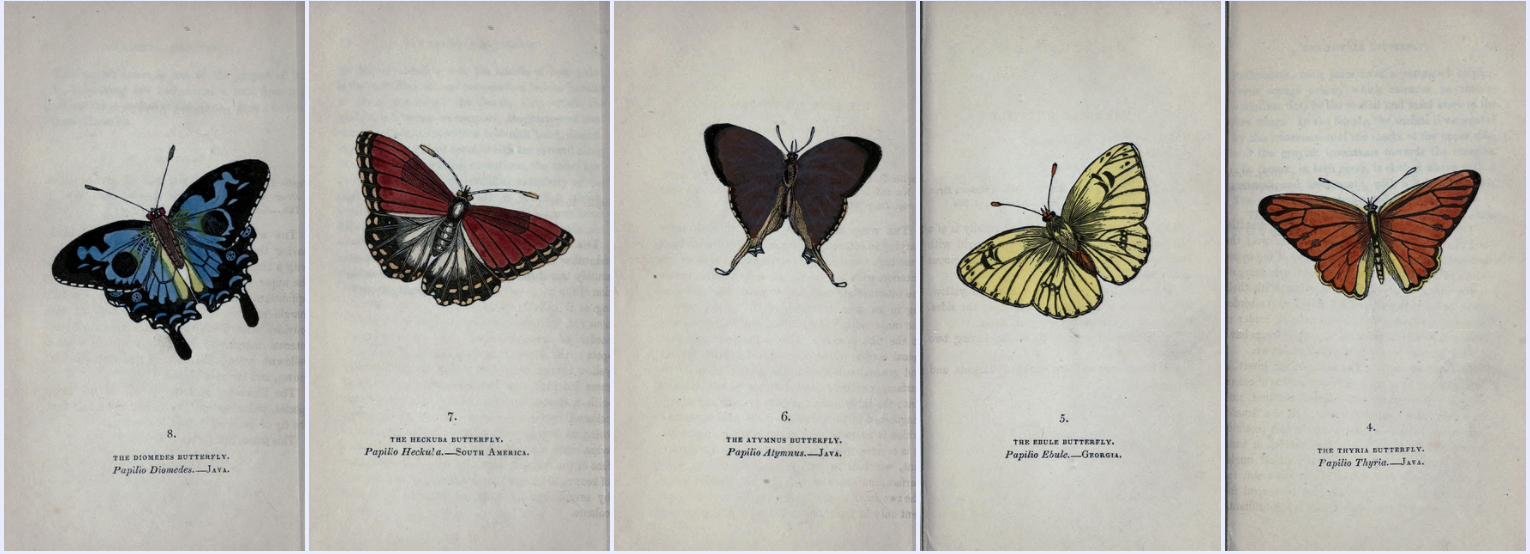


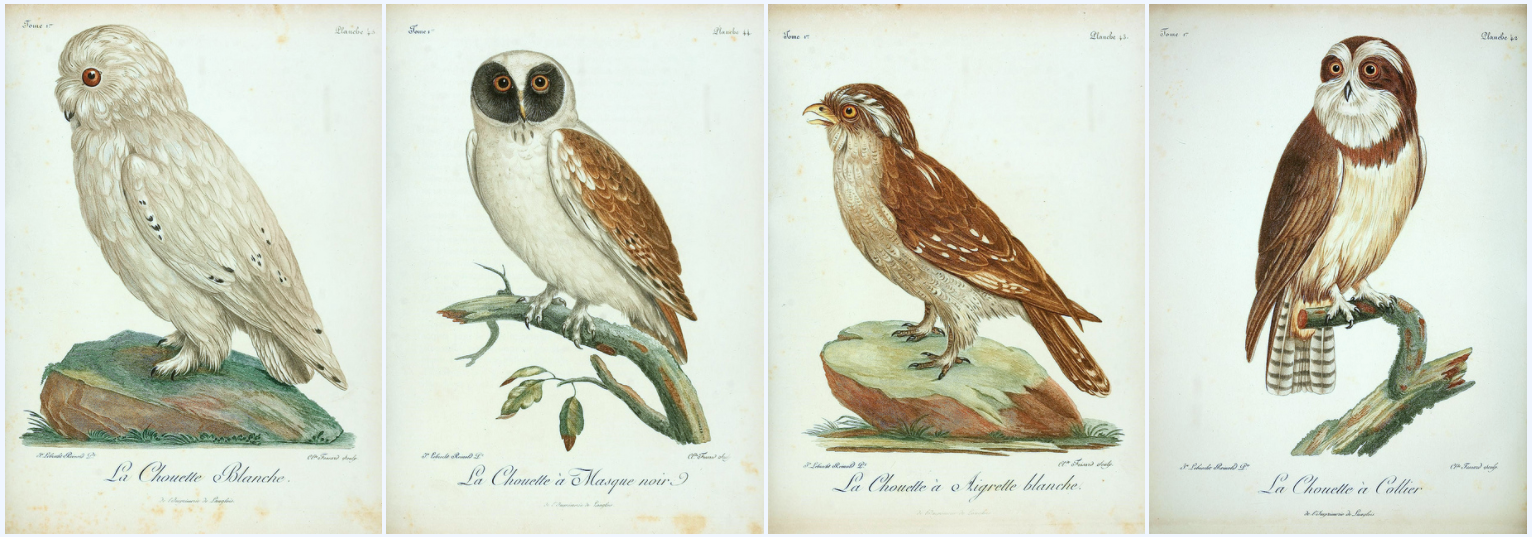
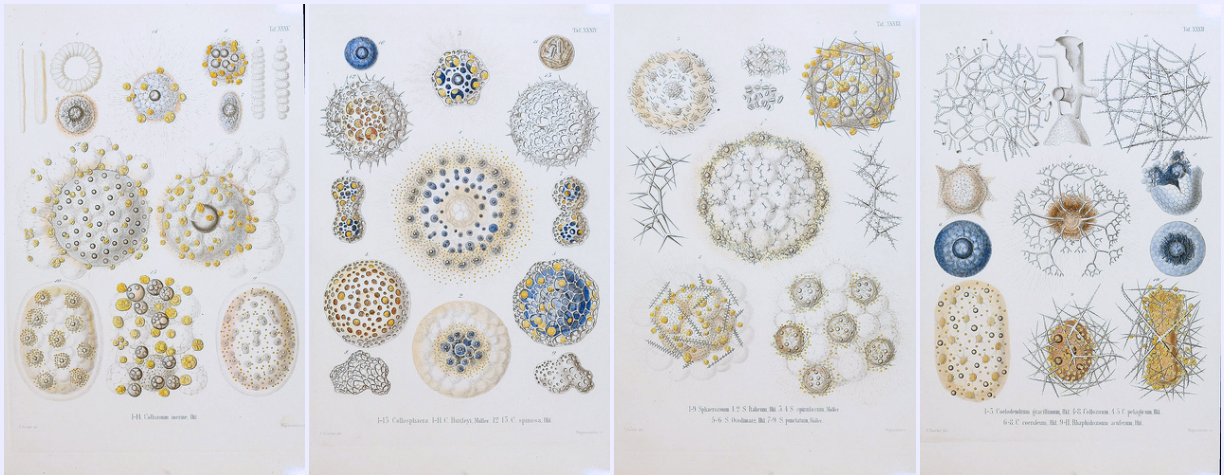


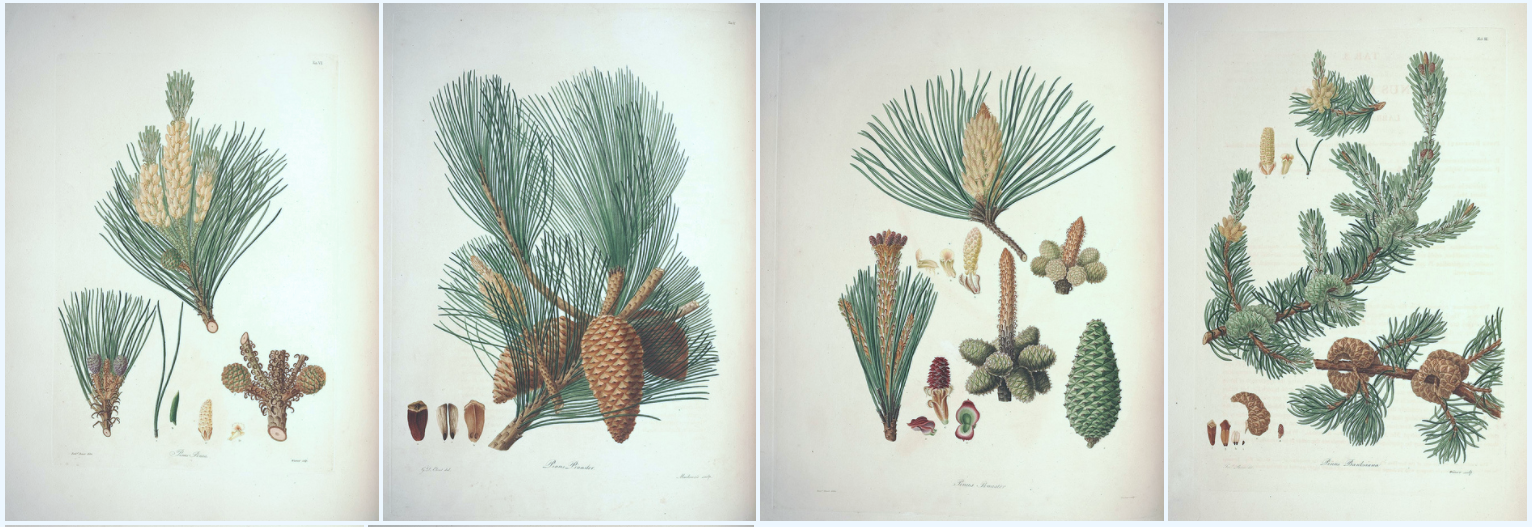
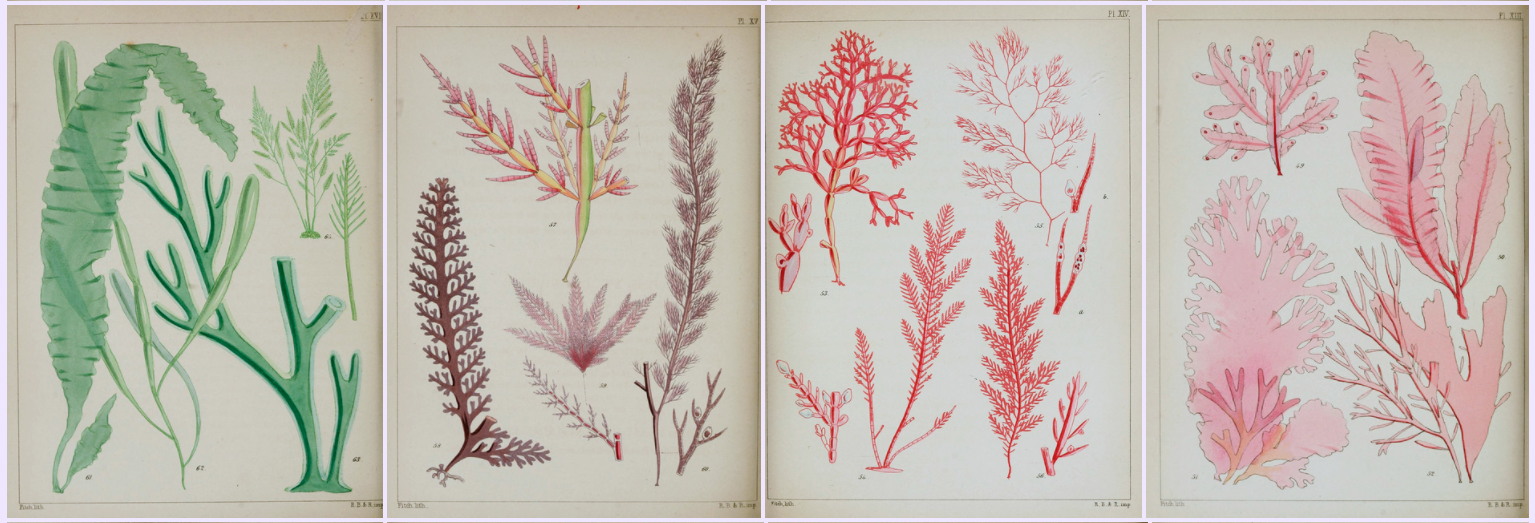

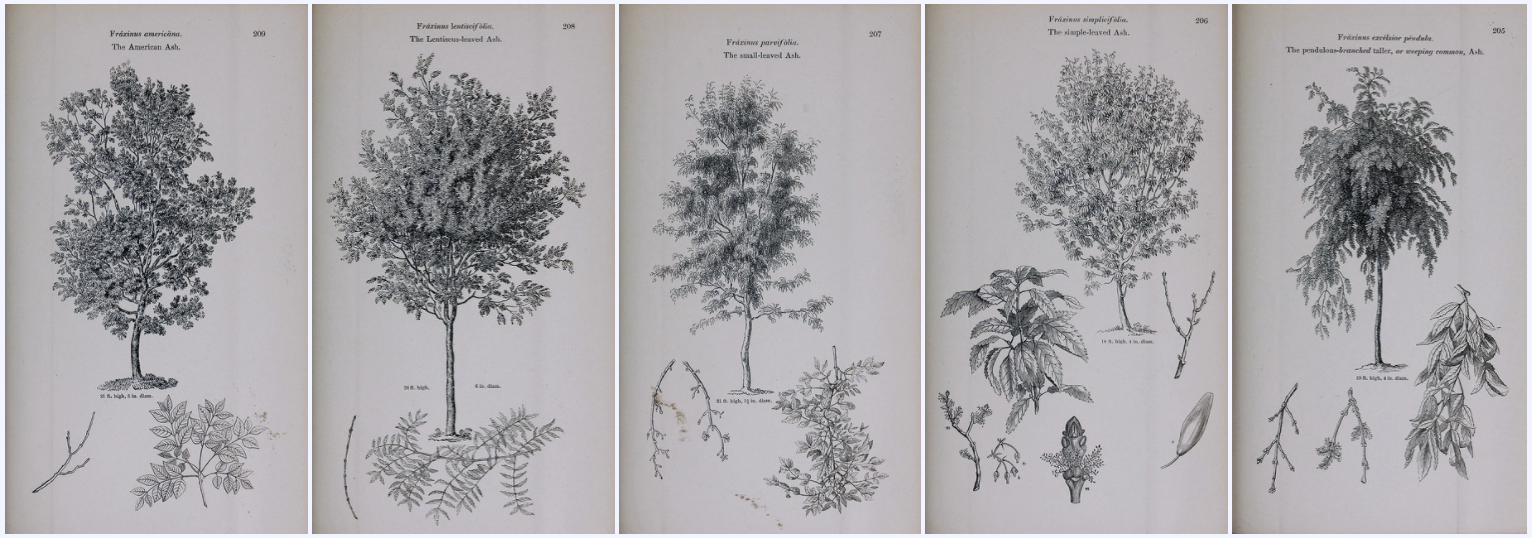
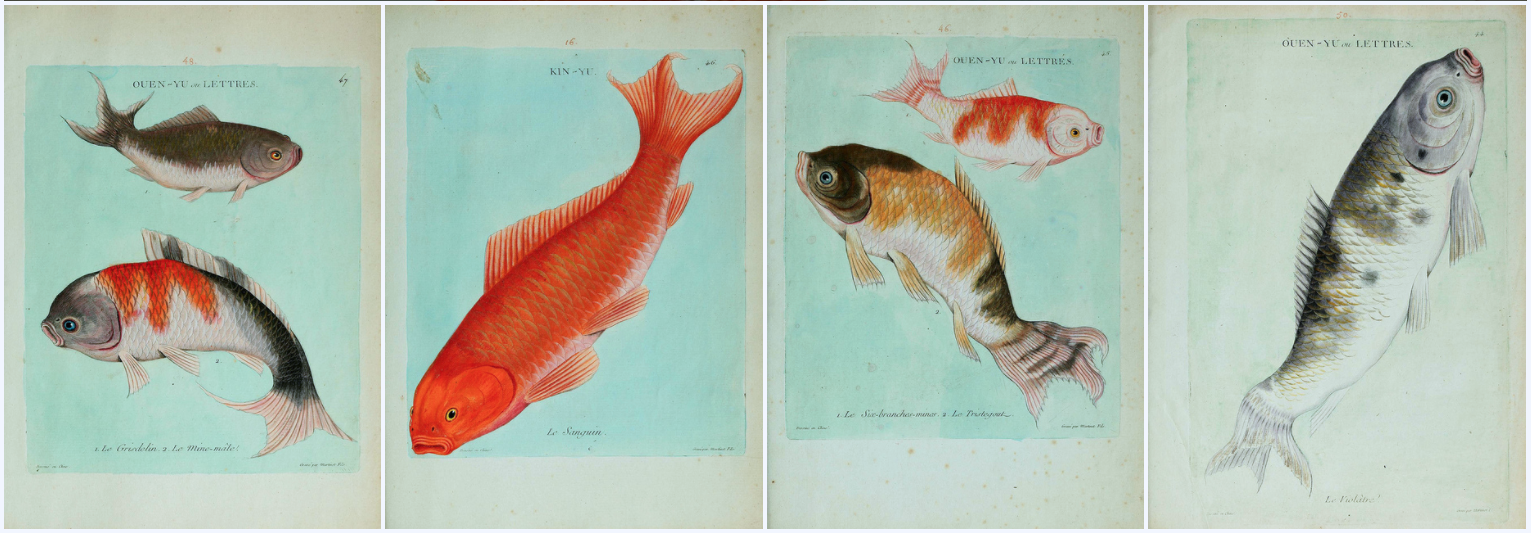
If you click over to any of those albums, you’ll notice that the color in my pictures above is different from the original. Some of those original pictures are so brown and dark because of the age of the books they came from. I do like a bit of age showing on the pictures, but not quite as much as most of those have. So I just pulled up the pictures in my photo editing program and edited the white balance (a one-click fix) on the photos to remove some of the darkness and aged brown appearance.
Downloading the pictures is very easy. When you’re in an album and you see a picture you want, just click on the picture and it’ll bring up a larger version. Then look just below the picture on the right side of the screen, and you’ll see an icon that is a down arrow with a line under it. Click that to download. I like to download the original size (which is usually larger than I need) and then use my photo editor to crop and resize to the exact size I want. If you don’t have photo editing software, you could use an online program like Picmonkey and sign up for a free trial.
All of the photos have a Creative Commons attribution, which means that you’re free to share and adapt the pictures. But of course, most of us would just want to print them out, put them in frames, and hang them on our walls. That’s perfectly fine to do.
Like I said, the sampling above just barely scratches the surface. Again, there are over 2500 albums with a total of over 122,000 pictures. There’s sure to be something there for just about everyone’s taste. But fair warning. Don’t click over unless you have at least an hour of free time. Once you start looking through those albums, it’s easy to lose an entire afternoon. Ask me how I know. 🙂
Addicted 2 Decorating is where I share my DIY and decorating journey as I remodel and decorate the 1948 fixer upper that my husband, Matt, and I bought in 2013. Matt has M.S. and is unable to do physical work, so I do the majority of the work on the house by myself. You can learn more about me here.


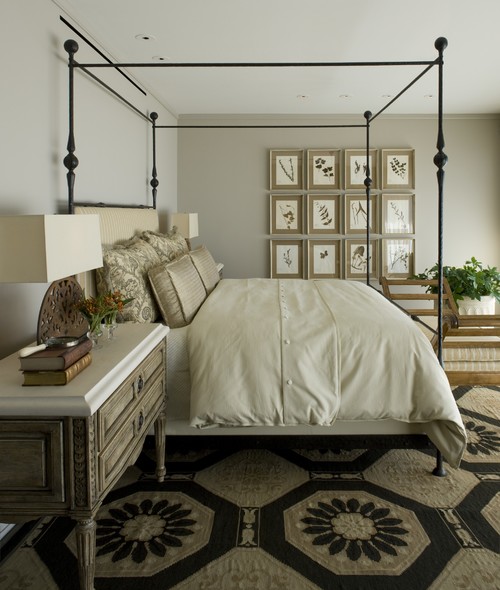
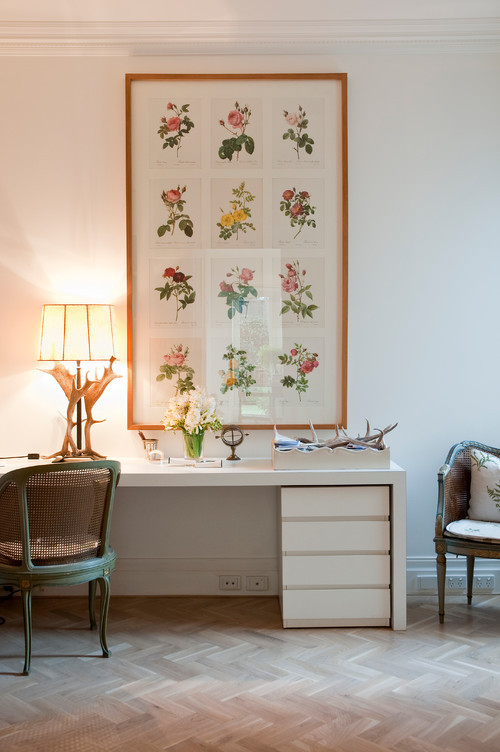


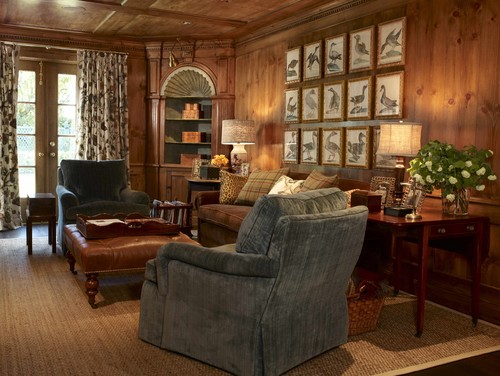


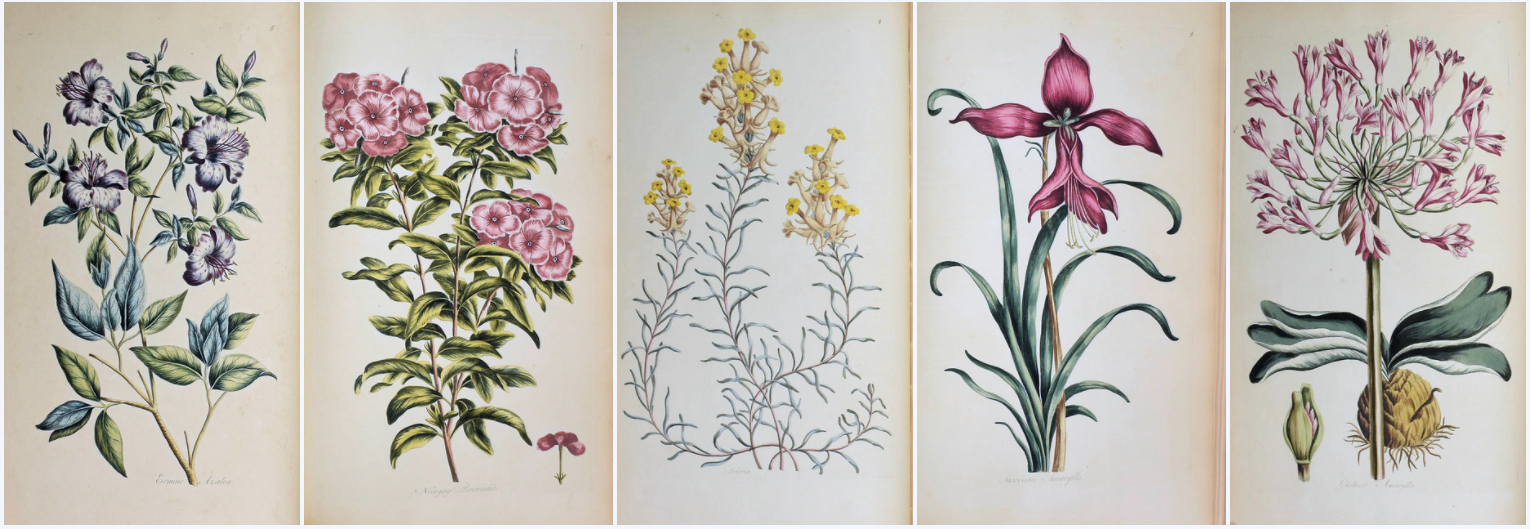
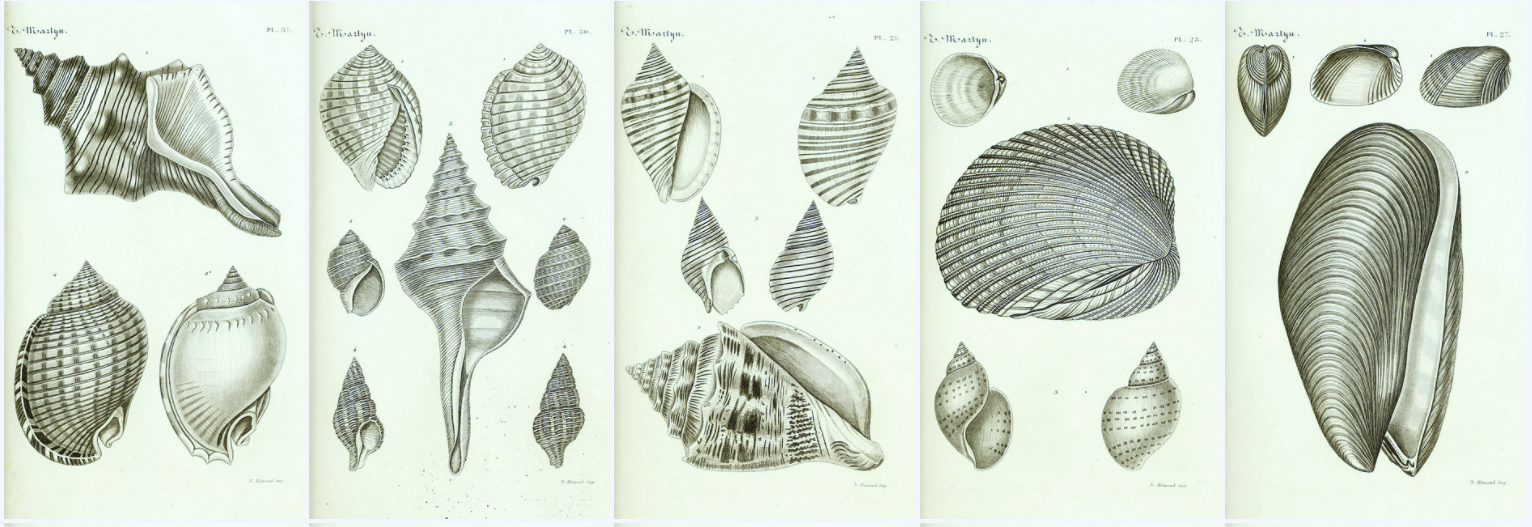


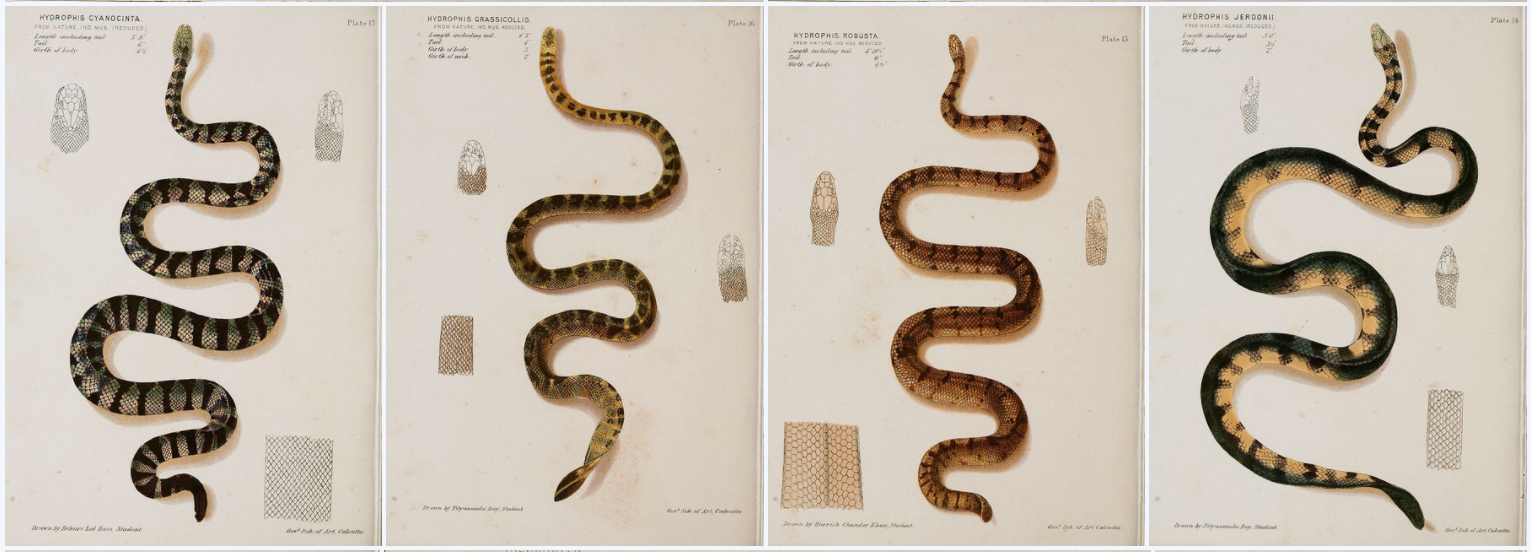
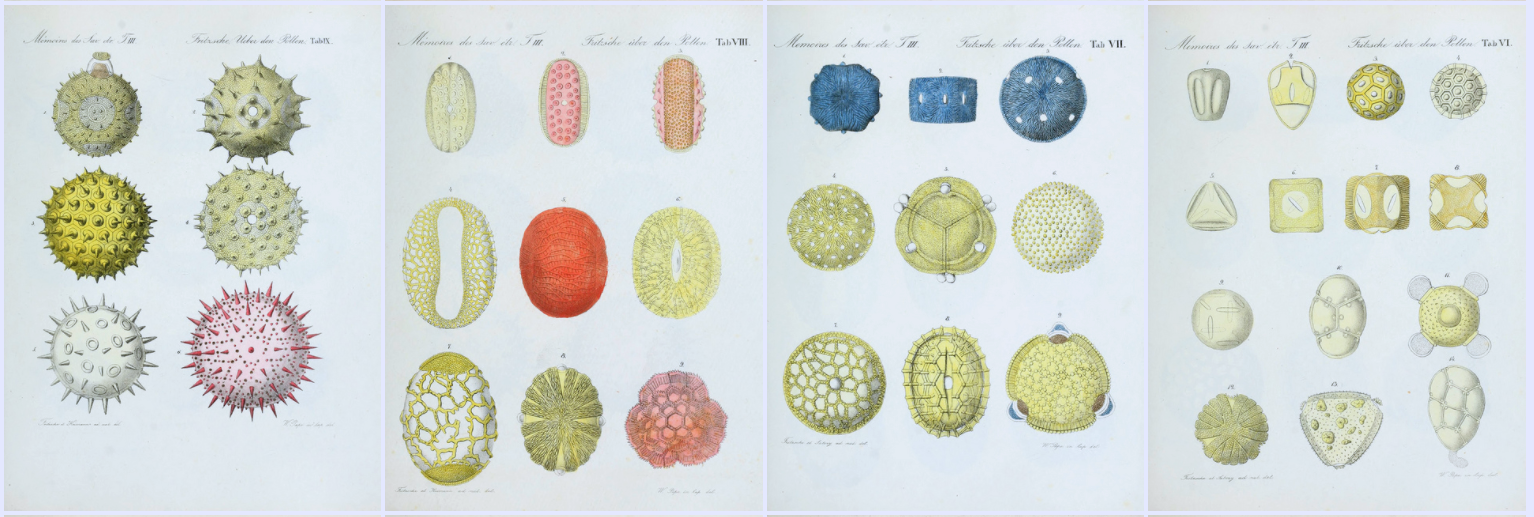



Ah-Maz-ing!
Very cool resource!
So glad you shared!!
Very cool resource. But also, today I learned that it is Mother Lode, not Mother Load (the biggest of all loads?). And it originates from gold mining?! Haha I had no idea 🙂
thank you, Kristi, for this fabulous source! It is surely something I will use and I’m very happy that you found it – and that you share my taste for this kind of pictures 🙂
Didn’t know bout his free source…….thank you so much for sharing the details.
Thank you for sharing! Amazing, amazing resource!
Moving into a new place at the end of the month with double the square footage from what we have now. Which means lots of wall space that needs filled. I feel some of these illustrations will be making an appearance! Thanks so much for sharing!
Wooooow! So neat! I will have to remember this for when I get to the point of putting art up on my walls. In five years, haha,
LOVE!!!!!!
Thanks!
you can also patronize living contemporary botanical and nature artists, who sell prints of their work.
most of them will also have prints made to a custom size.
there are organizations such as
‘the american society of botanical artists’ and other venues in case you would want to look at contemporary artists
Oooh! Thank you SO much. I can hear my husband, “What the heck are you doing? You’ve been in front of that screen for three hours”!
WOW – now THIS is a really cool resource!!! Thanks so much for sharing it!
As an artist, these are the bane of my existence, however if you choose to do this (as opposed to actually hunting down some from actual antique books from a flea market or a relative) then at least print them on decent 28# paper. Hammermill makes some nice 28# paper that makes copies so much brighter and crisper and the background more opaque.
Thanks for the tip on using a better grade of paper! Personally, I love seeing a big group of botanicals framed and hung on a big wall, and l hope to try it soon. Kristi, thanks for the superb selection you showed us today, and when l have a few hours to spare, l am going to check it out!
Yeah. I was sitting here wondering about that exact thing…artists on Etsy. My daughter is a frequent buyer of artists on Etsy and has commissioned quite a few wonderful original pieces. She found most to be accommodating and she, too, loves botanical’s. Good idea about the paper!
Jan, thank you for the information about the paper. I was wondering exactly what would be a good paper to use for printing these lovely illustrations.
I have a smallish collection of antique and vintage books (including a REALLY old version of Pinocchio (in Italian), and The Decameron, and also a couple old atlases and botanical books. I’ve been wanting to frame some of the botanical prints, but the books are in good condition considering their age, and I am such a book lover that I’ve never been able to tear them apart to remove the plates, it just seems sacrilegious to me to do that. These botanical plates solve that problem!
I love the birds. They look very similar to the collection I have by J Gould. I started collecting them many years ago bc (before computers…I would’ve spent a small fortune if I’d had computer access!) Found many by rummaging through garage sales & thrift shops. My original one hung in my grandmother’s home & I always loved it. Sadly, they are now all in a box in the garage but seeing your post, I have a hankering to go dig them out!
Awesome. I love botantical and animal prints too! Thanks for the resource.
This is amazing! I have been wanting to do a gallery as well using these type of prints. Did you find a way to do a key word search? ex: Vegetables, evergreens, dogs, etc…
Wowzers! I will have to explore one of these days and I would guess you could print out several different sets to change out, as you want to. Thank you for sharing the links.
Roseate Spoonbills are my favorite bird! They are so beautiful. You should definitely put a Rosie somewhere in your house 🙂
Wow! Thank you so much for sharing this!
So grateful to you for sharing this information, Kristi.
I actually have vintage botanical prints SOMEWHERE in storage! 🤨. They even have tissue paper between the prints. I am going to go crazy now looking for them. Weve moved since I last saw them. Beautiful
This is one of the Smithsonian Libraries. My daughter worked an internship with them when she was in grad school. Some very cool stuff! Thanks for sharing!
Thank you so much for this invaluable information. I also want to tell you that you are my hero with the knowledge you have to do so many DIY projects and the fearlessness to tackle just about anything.
Kristi, I seem to be the only one in the dark (perhaps because I have never used Flickr), about how to interpret the presented sizes. For example (random selection), what size is “medium (306 x 500” and “large (627 x 1024)”? Also, do any of the available sizes correspond to readymade frames or do they all require resizing?
This is a beautiful source. Thanks for sharing. As always, I look forward to your final product.
I generally use my photo editing program (Paint Shop Pro) to convert between pixels and print size, but it looks like a picture that’s 2400 pixels x 3000 pixels will print out to 8″ x 10″. If that’s accurate, then each 300 pixels equals one inch in print size. But if something is too large or too small, it can be resized using a photo editing program. It’s probably not likely that any of them will print out the exact size to fit into a standard frame since they’re all from books that are 100+ years old, so you’d probably have to resize them to fit your frames.
Betty, all prints should be matted to keep them from touching the glass. and do print them on high quality paper/card stock. Stiffer is better.
So you would be able to mat them up into a standard size frame, easily.
Your mats should probably should all be the same[color and size] for consistency, and the same with your frames, and they certainly don’t have to be expensive, either.
Cool web site!
Yikes, Kristi! You do realize, don’t you, that you have just started the next new trend in DIY decorating? Right off the bat I can think of 3 or more places in my home that “need” a grouping from here. I am definitely going to do one in bright flowers and perhaps smaller frames of the ferns. So many possibilities to try.
Thanks for both the inspiration and the fabulous source.
Thanks for this treasure trove! Ten minutes has yielded the following:
This page classifies the collections, e.g. birds, insects: https://www.flickr.com/photos/biodivlibrary/collections
Kristi you might like this set of vibrant teal butterflies: https://www.flickr.com/photos/biodivlibrary/sets/72157664083819061/
I also take on board comments about supporting working artists. I would encourage everyone to keep an eye out for local exhibitions and engage with local artists as well as delving into this source of free images
WOW thank you so much for this resource! I have always wanted to do something like this as well but never knew how to get my hands on so many botanical images like that. pinning:)
I love this! I love birds and botanic prints (all of which I have grouped). Mine are prints/engravings I’ve picked up on my travels. It’s always been my experience that framing and matting cost more than the prints, even the antique ones! Great to know that there’s a source for this. I’m in love with the bees.
Wow- Thanks because I am already sensing the trouble I’m about to get into ! Fun!
What a find! I love the style and character of all of these. Thank you so much for sharing!
When I was planning my wedding dress, I was looking all over for naturalistic drawings of flowers to embroider, it was not fun, flicker did not exist then. Oh, this is going to make coming up with new embroidery patterns a great deal funner. Thank you for this. 🙂
I know what you mean about the difficulty in getting multiple nature prints by the same artist. I once happened upon a portfolio of Redoute prints (your 3rd picture) in excellent condition in a charity store and bought them immediately; they were a bit pricey but still a bargain. I now have gallery walls in both my bedroom and work office.
The link to the Biodiversity Library is much appreciated. Someone pointed out that it was part of the Smithsonian which doesn’t surprise me. Another great site for free artwork is the Library of Congress. They have everything from fine art, advertising, and antique baseball cards to photos that go back to the age of daguerreotypes.
http://www.loc.gov/pictures/
On closer observation, the 3rd photo is nice but not Redoute.
These are really neat! Many years ago I was browsing the Smithsonian site when I found out you could get prints there. But I didn’t quite understand what I was doing in regards to ordering, so I just gave up. I would just like to have a couple of books like these, to look at for my own enjoyment!
Holy Guacamole! This is exactly what I’ve wanted for years. Thank you for hooking us all up with this source!
YaY!!! I love this this! Thank you so much for sharing this resource and also the Etsy company for the Sari trim. I’ve already ordered trim. 🙂
Wow, great share! Another good source is The Graphics Fairy.
https://thegraphicsfairy.com
I am a huge fan of thrifting. I have a collection of roller derby art posters…and was looking for cheap frames (they are a non-standard size, so I went with a larger, but too-wide, frame). Once I knew the size I needed…I went to antique stores and thrift malls and flea markets just looking for the size frame I wanted and a price tag under ten bucks. I ended up with some janky looking frames (the worst one in the bunch ended up being my favorite!). I put my posters ON TOP OF the existing art…choosing the frame/art by how it went with the poster colors. It looked amazing and funky. And none of that is the point. My point is….at least 5 of my mismatched frames had the exact same botanical print series in them…different flowers…but the text font was the same and the matting was the same. I covered them over…but finding nice botanical prints in thrift stores is also an option!
Very neat resource – I will be bookmarking it!
I also like hanging collections of prints. If anyone is decorating on the cheap, I have replicated this look by framing pages from old calendars – I have found good bargains on calendars from the previous year on clearance, or at thrift stores/yard sales and have found some interesting collections of images from different artists, landscapes, etc.
I love these! Thank you so much!
Thank you Kristi for sharing this amazing resource! I will be spending time later taking a longer look at the albums! My personal favorites are anything with seashells, flowers, birds, butterflies, and bees, as well as animals.
Until you shared this, I’d only used the Graphics Fairy. Thanks so much for sharing these pictures!
Next you will have to show us how to hang 12+ prints and get them all even spacing and hanging straight.
I’ve used velcro before but it’s pretty sticky and removed some paint when I took it down later-but it sure is easy!
Another great photo source is the New York Public library digital archive. Free download s of lots of pics
Thanks so much, Kristi! I have long been a fan of antique botanical prints, but was discouraged at the price of a good one. They really resonate with me, not only from an aesthetic sense,but because I am a nature lover who loves learning and identifying the types of trees, birds, flowers, etc. while hiking. ( It used to be such a pain having to drag around three different field guides —now we can get it all on our phones (provided there is reception, LOL!)) People used to be so much more in touch with the natural world around them that they felt it worthwhile to learn to identify the different species of things, and hence the proliferation and popularity of these prints as an art form. My old girl-scout troop leader (who was in her 80’s when I had her, way back in the 70’s !) had actually been a “nature” teacher in elementary school back in the 20’s-40’s when that was actually taught as a separate subject!
Thanks for the useful tips.
OMG, Thank you so much for sharing this!!!!
Thanks, Kristi
As a set designer looking for vintage flower prints for set decoration, you have shown me a treasure trove of information. Bookmarked and followed.
My director will loose her mind over what I’ve found.
Thank you so very much, Kristi. I have been looking for just this very thing but had trouble trying to find what I wanted on the site. And here you come along Ang have the links to the very pages I needed !
Thank you again .